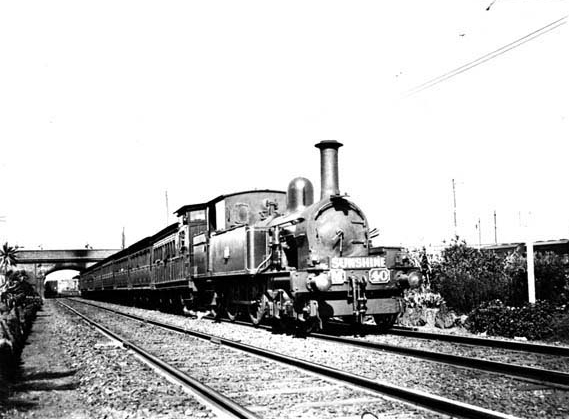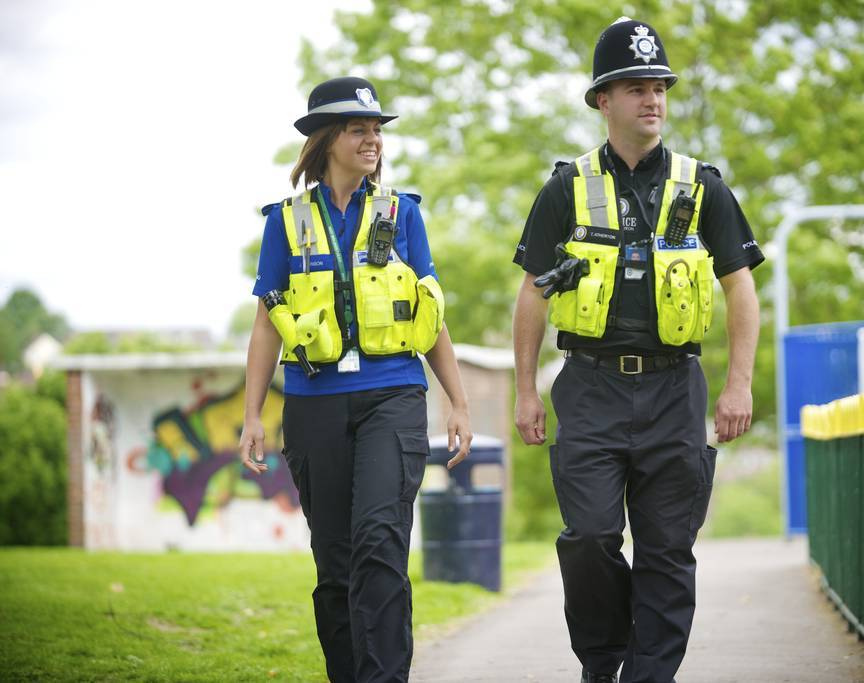|
Gardiner Railway Station
Gardiner railway station is a commuter railway station in Glen Iris, Victoria, Glen Iris, a suburb of Melbourne, Victoria, Australia. The station opened on 24 March 1890, named after pastoralist John Gardiner (Australia), John Gardiner, who had settled near the junction of the Yarra River and Gardiners Creek in 1836. The station consists of two side platforms accessed by a Concourse, pedestrian concourse. There is one principal station building located on the concourse which serves as bike parking space and Protective Service Officer, PSO facilities. This building is single story and opened in 2016 as part of a station rebuild. The station is fully Accessibility, accessible as there are Disability Discrimination Act 1992, DDA compliant lifts and access ramps provided. The station is owned by VicTrack, a state government agency, and the station is operated by Metro Trains Melbourne, Metro Trains. Gardiner railway station is served by the Glen Waverley line, part of the Railways ... [...More Info...] [...Related Items...] OR: [Wikipedia] [Google] [Baidu] |
Public Transport Victoria
Public Transport Victoria (PTV) is the brand name for public transport in the Australian state of Victoria. It was previously the trading name of the Public Transport Development Authority (PTDA), a now-defunct statutory authority in Victoria, responsible for providing, coordinating, and promoting public transport. PTV began operating on 2 April 2012, taking over many of the responsibilities previously exercised by the Director of Public Transport and the Department of Transport. It also took over the marketing of public transport in Victoria from Metlink and Viclink, as well as responsibility for the myki ticketing system, formerly handled by the Transport Ticketing Authority. PTV's functions were transferred to the Department of Transport and Planning (DTP) on 1 July 2019. However, PTV continues to exist as the brand for public transport services in Victoria and refers to the Public Transport division of DTP. Governance PTV was the trading name of the Public Tr ... [...More Info...] [...Related Items...] OR: [Wikipedia] [Google] [Baidu] |
John Gardiner (Australia)
John Gardiner (9 September 1798 – 16 November 1878) was a banker and pastoralist in the early part of British settlement of Melbourne and Australia. In 1836, he established a settlement near the junction of the Yarra River and Kooyongkoot Creek, which was later renamed after him. Legacy Several features of Melbourne have been named after John Gardiner, including: * Gardiner's Creek A waterway in the eastern suburbs of Melbourne, and part of the Yarra River catchment. In Gardiner's time, the creek was known as Kooyongkoot. * John Gardiner Reserve A park in Booroondara, the site of a former quarry * John Gardiner Secondary College a secondary school, now closed. Auburn High School now occupies the site. * Gardiner Road A road in Booroondara *John Gardiner Rover Crew A Rover Scout Unit located in Ferndale Park, Glen Iris *Gardiner Railway Station a railway station on the Glen Waverley line References * A. S. Kenyon, 'The Overlanders', Victorian Historical Magazine, 10 (19 ... [...More Info...] [...Related Items...] OR: [Wikipedia] [Google] [Baidu] |
Burke Road
Burke Road is a major north–south thoroughfare in Melbourne, Australia. It runs from Ivanhoe East to Caulfield East and through the major shopping district at Camberwell. It is aligned with the western boundary of Elgar's Special Survey, and does not conform to the interval cadastral survey grid for Melbourne. Route Burke Road starts at the intersection with Lower Heidelberg and Maltravers Roads, heading south as a dual-lane, single-carriageway road through Ivanhoe East until crossing over the Yarra River, where it widens to a four-lane, dual-carriageway road, crosses the Eastern Freeway, and continues south until it reaches the intersection with High Street, Kilby and Doncaster Roads, where it narrows to a four-lane single-carriageway road. It continues south through Balwyn, over the Lilydale railway line and through Camberwell Junction at Camberwell, crossing the Monash Freeway and Glen Waverley railway line at Glen Iris, eventually to terminate at Princes Highway ... [...More Info...] [...Related Items...] OR: [Wikipedia] [Google] [Baidu] |
Monash Freeway
The Monash Freeway is a major urban freeway in Victoria (Australia), Victoria, Australia, linking Melbourne's CBD to its south-eastern suburbs and beyond to the Gippsland region. It carries up to 180,000 vehicles per day and is one of Australia's busiest freeways. The entire stretch of the Monash Freeway bears the designation M1. The freeway is named in honour of General (Australia), General Sir John Monash, an esteemed Australian military commander for the Allies of World War I, allies during World War I. History The Monash Freeway is an amalgamation of two initially separate freeways: the Mulgrave Freeway (initially designated Freeway Route 81) linking Warrigal Road, Chadstone, Victoria, Chadstone to the Princes Highway in Eumemmerring, Victoria, Eumemmerring; and the South Eastern Freeway (initially designated Metropolitan Route 80, then Freeway Route 80) linking Hoddle Highway, Punt Road, Richmond, Victoria, Richmond and Toorak Road, Hawthorn East, Victoria, Hawthorn East. ... [...More Info...] [...Related Items...] OR: [Wikipedia] [Google] [Baidu] |
Melbourne Tram Route 72
Melbourne tram route 72 is operated by Yarra Trams on the Melbourne tram network from Melbourne University to Camberwell. The 16.8 kilometre route is operated out of Malvern depot with Z and D class trams. History Route 72 was first allocated to the line between Camberwell (Burke Road) and the City (Swanston Street) on 1 November 1970.The Camberwell Tramway ''Transit Australia'' November 1998 pages 243-248 Prior to that, the line to Camberwell was serviced by route 7. The change was at first due to operations of the Camberwell line being shifted from Malvern depot to Camberwell depot. Even though the route was subsequently returned to Malvern in August 1979, the number 72 was kept. Before 1970, Route 72 was a short-working of the Wattle Park line, for trams that terminated at Riversdale instead of Wattle Park. Trams traditionally terminated at the Victoria Street terminus, but following an accident in 1991, trams instead terminated at the Queensberry Street crossover. D ... [...More Info...] [...Related Items...] OR: [Wikipedia] [Google] [Baidu] |
Railways In Melbourne
The Melbourne rail network is a metropolitan Commuter rail, suburban and Rail freight transport, freight rail system serving the city of Melbourne, Victoria (Australia), Victoria, Australia. The metropolitan rail network is centred around the Melbourne central business district (CBD) and consists of 221 railway stations across 16 lines, which served a patronage of 182.5 million over the year 2023–2024. It is the core of the larger Rail transport in Victoria, Victorian railway network, with regional links to both intrastate and interstate rail systems. Metro Trains Melbourne operates the Melbourne metropolitan rail network under franchising, franchise from the Victoria State Government, Victorian Government, overseen by Public Transport Victoria, a division of the Department of Transport and Planning. The government-owned entity V/Line operates trains from Melbourne across Rail transport in Victoria, regional Victoria. The first steam train in Australia commenced service in ... [...More Info...] [...Related Items...] OR: [Wikipedia] [Google] [Baidu] |
Glen Waverley Line
The Glen Waverley line is a commuter railway line in the city of Melbourne, Victoria, Australia. Operated by Metro Trains Melbourne, it is the city's sixth shortest metropolitan railway line at . The line runs from Flinders Street station in central Melbourne to Glen Waverley station in the east, serving 20 stations including Burnley, Kooyong, East Malvern, and Jordanville. The line operates for approximately 19 hours a day (from approximately 5:15 am to around 12:00 am) with 24 hour service available on Friday and Saturday nights. The line operates with headways of up to 7 minutes during peak hours and as long as 30 minutes during off-peak hours. Trains on the Glen Waverley line run with two three-car formations of X'Trapolis 100 trainsets. Sections of the Glen Waverley line opened as early as 1890, with the line fully extended to Glen Waverley in 1930. The line was built to connect Melbourne with the rural towns of Kooyong, East Malvern, Mount Waverley, and Glen Waverl ... [...More Info...] [...Related Items...] OR: [Wikipedia] [Google] [Baidu] |
Disability Discrimination Act 1992
The ''Disability Discrimination Act 1992'' (Cth) is an Act passed by the Parliament of Australia in which prohibits discrimination against people with disabilities in employment, education, publicly available premises, provision of goods and services, accommodation, clubs and associations, and other contexts. Discrimination is defined to include failing to make reasonable adjustments for the person. The Australian Human Rights Commission are given and assess complaints made under the Act. Background At the time of the Act's enactment, a variety of anti-discrimination acts for people with disabilities already existed in the different state legislatures, some dating back to the early 1980s. All states and territories except Tasmania and the Northern Territory had anti-discrimination laws in place, and these two places had legislation under consideration. There were three reasons given for enacting a federal law: *Standardise the scope of rights offered around the country *Implem ... [...More Info...] [...Related Items...] OR: [Wikipedia] [Google] [Baidu] |
Protective Service Officer
A police community support officer (PCSO; ), or as written in legislation Community Support Officer (CSO; ), is a uniformed member of police staff in England and Wales, a role created by Section 38(2) of the Police Reform Act 2002, which was given Royal Assent by Queen Elizabeth II on 24 July 2002. They are not warranted, but hold a variety of police powers and the power of a constable in various instances by the forty-three territorial police forces in England and Wales and the British Transport Police (which is the only specialist police service to employ PCSOs). History PCSOs were introduced in September 2002 and first recruited by the Metropolitan Police. Proposals for PCSOs in Northern Ireland were prevented by a budget shortfall in the Police Service of Northern Ireland, as well as fears that the introduction of uniformed and unarmed PCSOs in Northern Ireland (PSNI constables all carry firearms) would mean they would potentially then become a "legitimate target" in the e ... [...More Info...] [...Related Items...] OR: [Wikipedia] [Google] [Baidu] |
Concourse
A concourse is a place where pathways or roads meet, such as in a hotel, a convention center, a railway station, an airport terminal, a hall, or other space. The term is not limited to places where there are literally pathways or roadways or train tracks joining. An alternate meaning now is "an open space or hall (as in a railway terminal) where crowds gather." In this meaning as a place where crowds gather, while many persons in any crowd no doubt have followed different paths in their lives to get to the place, there need not be notable specific roadways leading to the place. Examples Examples of concourses include: *Airport terminals * Conference centres *Hotels *Meeting halls * Railway stations *Shopping malls or portions of shopping malls which are often called "shopping concourses" *Sports arenas and stadiums *Universities Gallery Outdoor concourses Image:Earnley concourse West Sussex.jpg, Earnley Concourse, West Sussex, 2009 Image:ASDA concourse Llandudno.jpg, Asda su ... [...More Info...] [...Related Items...] OR: [Wikipedia] [Google] [Baidu] |




